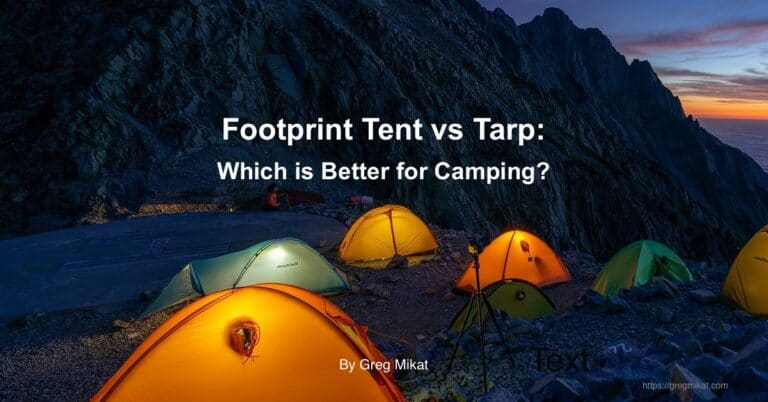Trekking vs Hiking: Is There a Difference?
The short answer is yes! Although there is overlap and similarities between both, the differences are distinct.
Trekking and hiking are often used interchangeably but they encompass distinctly different activities. Both involve walking in nature and provide a chance to enjoy the natural environment, but the scope and challenge involved can vary greatly.
Understanding these differences helps outdoor adventurers plan their trips according to their interests, abilities, and the kind of experience they’re seeking. Whether one prefers the leisurely pace of a scenic hike or the thrill of a challenging trek, both activities provide substantial benefits and the opportunity to connect with the natural world.
Trekking and Hiking Definitions
Trekking and hiking are popular activities that primarily involve walking in natural environments. While they are similar, they have recognizable characteristics and equipment requirements.
Trekking Definition
the activity of walking long distances on foot for pleasure: We want to go trekking in the Himalayas.
Cambridge English Dictionary
- Trekking is an extended journey that typically unfolds over several days, involving long distances in often remote and challenging natural settings.
- Think of trekking as a more rigorous journey that could span multiple days or even weeks.
- Trekkers often carry their essential gear, food, and water, in a backpack, sometimes traversing through challenging terrain that might not be as well marked as hiking paths.
People embark on treks to explore large swaths of terrain, which can expose them to a variety of harsh weather conditions and require a higher degree of self-sufficiency which often demands a higher level of physical and mental preparation compared to hiking.
Essential gear for trekkers includes good hiking shoes designed for durability and support, as well as walking poles to assist with balance and reduce strain on the knees during lengthy ascents and descents.
Hiking Definition
the activity of going for long walks in the countryside: go hiking We’re going hiking in the Sierra Nevada.
Cambridge English Dictionary
- Hiking is a recreational activity that can range from a short, day-long walk to a longer endeavor, usually along established hiking trails.
- Hikers typically participate in this activity with the purpose of enjoyment and exercise, and it can often be completed within a few hours to a full day, referred to as a day hike.
- Hiking generally refers to walking on well-established trails or paths for a day or a few hours, typically not requiring overnight camping. It’s an accessible outdoor activity that people of all fitness levels can enjoy.
Regular hiking can improve cardiovascular health and strengthen muscles. Essential equipment for hikers is similar to trekking, with good hiking shoes being a cornerstone for stability and protection, although the gear is often less robust than what is required for the rigors of trekking.
Trekking Vs Hiking: What Is The Same?
Trekking and hiking are both outdoor activities that take individuals through natural environments. They share several commonalities which include the use of equipment and the physical and health benefits that they offer.
Common Equipment:
Both trekkers and hikers often rely on similar gear.
- Trekking poles provide stability and reduce stress on knees.
- Backpacks of various sizes depending on your journey.
- Hiking boots and shoes provide the necessary support, protection, and traction for a variety of terrains found in both hiking and trekking.
- Clothing appropriate for the weather. Hats, gloves, socks, pants or shorts, inclement weather gear etc.
- Water bottles and snacks for energy on the trail.
Health Benefits:
The physical challenge of hiking and trekking produces similar results.
- Cardiovascular fitness
- Muscle endurance
- Vitamin D Production from exposure to the sun
- Mental health – refreshing of the human spirit
While the duration and intensity of the activities often differ, the foundational aspects like gear selection and the pursuit of health benefits through physical exertion in nature are similar. Both trekking and hiking offer individuals a way to escape the hustle of daily life, providing a mental health boost along with the physical one. Whether one chooses to go for a day hike or a multi-day trek, the connection to nature and the use of basic hiking equipment remain constant.
Trekking Vs Hiking: What Is Different?
Trekking and hiking are both popular outdoor activities that take people into the beauty of the natural environment, but they cater to different experiences and skill levels. The main distinction lies in the duration, challenge, and type of terrain they generally involve.
Hiking and Trekking Comparative Chart
| Aspect | Hiking | Trekking |
| Duration | Typically single-day | Usually multiple days, could extend for a week or more |
| Accommodation | Usually not needed as it concludes in a day | Often involves camping or staying in huts/lodges |
| Terrain | Frequently on marked or established trails | May include off-path, rocky, or even uncharted terrain |
| Preparation | Requires minimal equipment; basic physical preparation | Necessitates thorough planning and greater physical fitness |
| Distance | Usually covers less distance | Covers more ground, suited for longer overnight adventures |
| Purpose | Recreational, fitness, or a day out with nature | Adventure seeking, exploration, and deep immersion in nature |
| Examples | Day walks in national parks, nature reserves | Popular trekking routes in the Himalayas, Andes, etc. |
While hiking often refers to day excursions on marked or established trails, trekking is geared towards more arduous multi-day hikes that might involve navigating through longer, often unmarked pathways and rocky terrain.
Trekkers typically carry all their necessary equipment for overnight stays and are expected to have a higher level of endurance than hikers, due to the longer distances covered and potentially challenging conditions they encounter.
Trekking can take adventurers to remote areas where they immerse themselves in the wilderness, exploring popular trekking routes that are renowned for their beauty and challenge.
Conclusion
Differences between trekking and hiking often amount to mere semantics or individual intentions for the scope of an adventure. If you are just getting started in either of these healthful activities it is nice to be sure of your terms and what is implied when you use one.
Adventure awaits!
Only those who risk going too far can possibly find out how far they can go.
– T.S. Eliot


